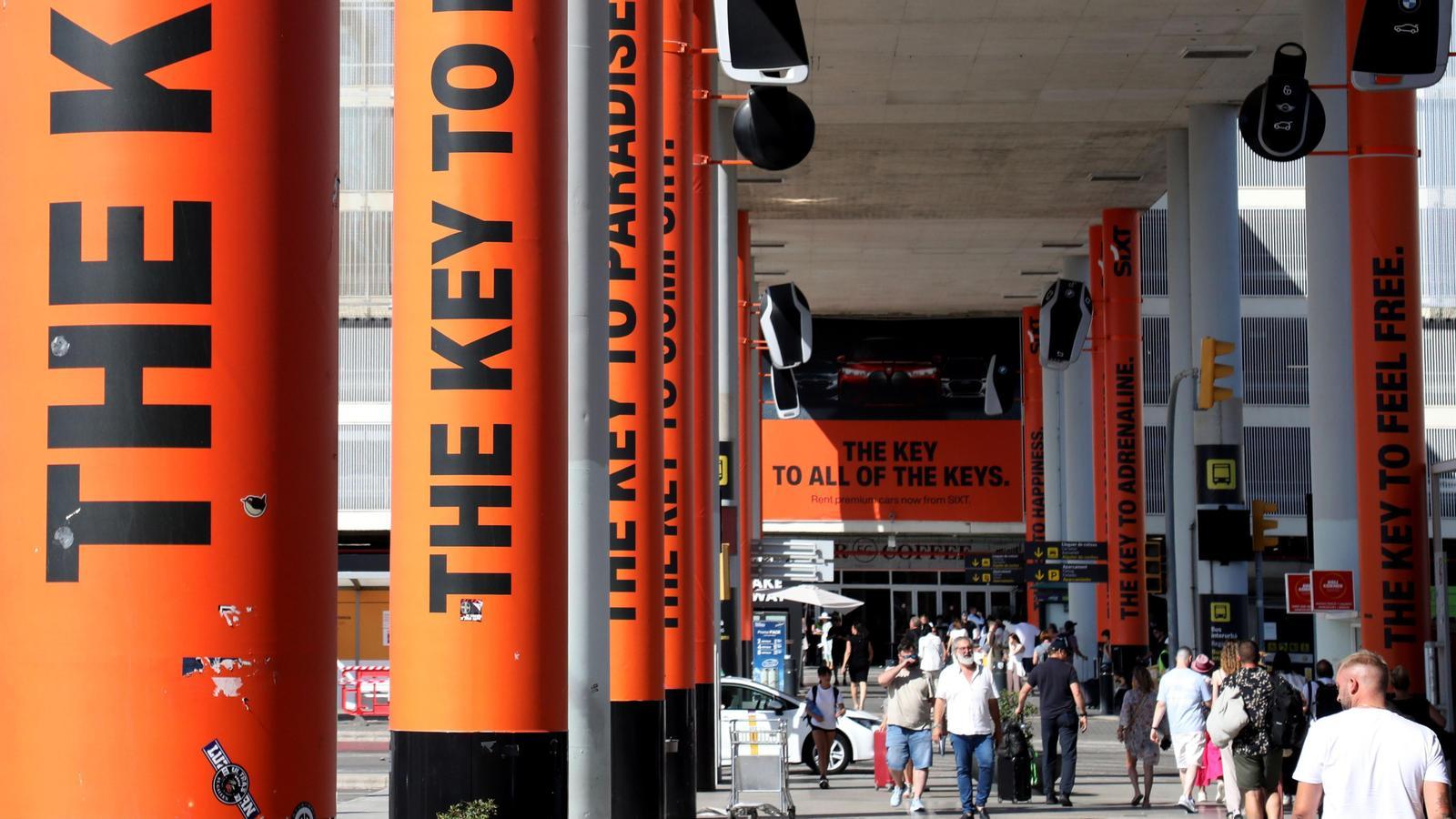A gold mine for Aena in times of saturation: 120 million euros for restaurants and shops at Balearic airports.
The company bases its business at the island's airports on increasing the area for commercial rentals, which is close to 30,000 m2. Users criticize the high prices.


PalmCoffee with milk and a croissant, the kind you can't take apart because it's frozen for the hospitality industry, 6.5 euros. A tortilla sandwich, beer, and coffee, 28 euros. This isn't a luxury restaurant, but rather an ordinary bar with shared tables, usually at any of the airports in the Balearic Islands and the rest of Spain. "It's shameful to pay this much for a coffee and pastry. It makes me so angry that, if I can avoid it, I don't have anything. But you can't always. I travel practically every week, and sometimes, on the way back, you have no choice," explains Marta Riera, an executive who works at ARABalears.
These prices, in addition to generating in consumers like Riera the feeling of having been robbed by a company that is still 51% publicly owned, generate significant profits for Aena. The rental of airport space to companies for restaurants, shops, and advertising generates €120 million annually in the Balearic Islands. These figures come from the state-owned company's annual reports and specific information provided to ARABalears by Aena. The company has 11,524 m2 of shops across the three airports and 18,733 m2 dedicated to bars and restaurants, almost 30,000 m2 in total. Restaurants alone generate no less than €40 million annually across Palma, Mahon, and Ibiza.
Palma has a record that confirms the importance of the restaurant business at Aena airports: on May 8th of this year, a new McDonald's restaurant opened in Module A, with a surface area of 1,000 m², 40 digital self-service checkout screens, eight production lines, and table service. It is the company's largest restaurant in Europe, which stated upon opening that it had created 200 jobs. The establishment is part of the renovation of Module A to modernize the terminal and expand the retail space.
On April 9, 2025, Lagardère Travel Retail opened a gourmet restaurant in Module C called Reserva Ibérica, specializing in Iberian cured meats, cheeses, and wines with a tasting area. "The airport model they're developing is very clear: have a lot of people inside, the more the better. It's the call for large restaurant companies to launch all kinds of services. Of course, paying very high rents to Aena," explains UIB economist Aleix Calveres.
According to the company's data, the first quarter of 2025 generated more than €82 million in rental revenue for bars and restaurants across Spain. If the trend continues, Aena could end 2025 with revenues of €330 million from this concept.
The large supermarket
But Aena doesn't rely on bars and restaurants alone. Its main business, beyond airport taxes, is retail. In the first quarter of 2025, it had already generated revenues of more than €150 million nationwide, which will exceed €600 million by the end of the year. In the Balearic Islands, revenues are more than €70 million annually. The revenue generated by duty-free shops, both nationwide and in the Balearic Islands, is particularly noteworthy. With 8,672 m2 dedicated exclusively to the so-called "tax-free" stores, the company boasts a total of 8,672 m2. duty-free, represent 75% of the total revenue collected in the Islands.
Vicenç Vidal, Sumar Més MP, has repeatedly questioned state representatives about Aena's management model. The island's profit and loss account has been drastically reduced, with no opportunity for island institutions to intervene, influence, or at least participate.
In addition to offering more and more spaces to buy gifts, clothes, or food and drink, the islands' airports are also a great advertising platform. "In the baggage claim area, or when you walk to the parking lot, it's truly filled with advertising, nothing like it was a few years ago. Aena is selling every square meter of its space throughout Spain, especially in the major airports, at the cost of offering a somewhat aggressive visual chaos," admits one partner, who can't be identified because he has a "direct relationship."
Advertising for the island's airports will be managed until 2026 by the Temporary Joint Venture (UTE), formed by New Business Media and CECO Shopping Centers. It was awarded a seven-year contract for €27.4 million, almost €4 per year. This is a guaranteed income for the airport company every 12 months. It will receive it regardless of the revenue generated by the joint venture. This year, Aena has already bid for the new contract.
The prices paid by advertising companies are not affordable for everyone. Broadcasting a spot on a large 7x3 meter arrivals screen costs €13,425 per month, even with the 25% discount included. Mupis (street furniture used as an information point)—a highly valued advertising aid at airports—can cost up to €25,988 per month for the six double-sided billboards located in the baggage claim area. All these prices are from June, as they still increase slightly in July and August.
Thanks to this commercial strategy of getting the most out of each square meter of airport space, Aena closed 2024 with gross revenue of €5,827.8 million (up 13.3%), of which €1,780 million came from the rental of space for bars and restaurants. The remainder comes mainly from airport tax revenue, the company's main source of income. In the end, it closed the year with a record net profit of 1,934.2 million euros, 18.6% more than in 2023. During the results presentation, the company's CEO, Mauricio Lucena, highlighted the "diversified model" of a highly profitable business, which he defined as "efficient and productive."
